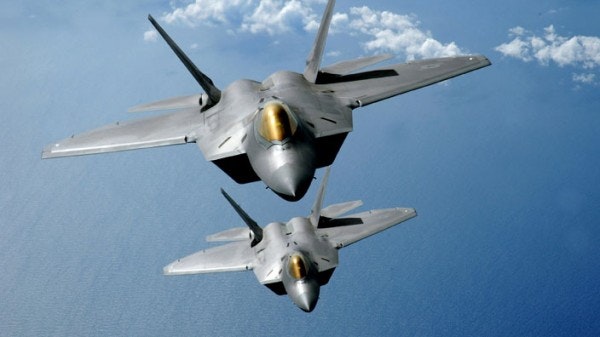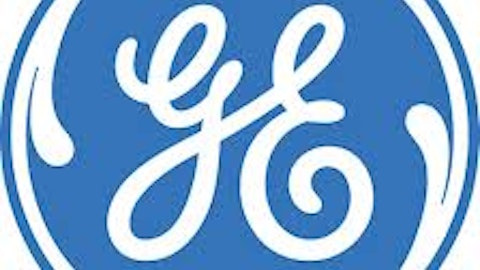United Technologies Corporation (NYSE:UTX) is a global provider of high technology products and services to the building systems and aerospace industries. Its business is classified into two main segments – Commercial, which includes Otis and UTC Climate, Controls & Security; and Aerospace, which includes Pratt & Whitney, UTC Aerospace Systems and Sikorsky.

After focusing on restructuring and integration of its acquisition last year, the company is now focused on its growth for FY13. Below I present key factors supporting United Technologies’ accelerated growth, which will be supported by top line growth, cost reductions, margin improvement, and disciplined cash flow redeployment.
Portfolio and restructuring
In FY12, it acquired Goodrich and majority ownership in the International Aero Engines collaboration (Pratt & Whitney has a 61% net interest and a 49.5% ownership interest), which has helped it in augmenting its commercial aerospace portfolio, thereby strengthening its position in the growing commercial aerospace market. It has experienced a significant shift in sales from Commercial and industrial to Commercial aerospace, which reflects the Goodrich and IAE transactions.
Apart from improving its portfolio, it has also realized the increasing risk of increasing costs and related margin deterioration. In the last five years it has invested about $2.5 billion in restructuring and has yielded ~$2.2 billion in savings (according to the Company Earnings Call). Over the next five years it expects to achieve ~$400 million in savings from the Goodrich acquisition, achieving half of these savings in FY13. About 70% of its costs come from its supply chain and half of it still comes from high cost location. Recognizing this, it has mentioned that it will continue to focus on restructuring in FY13, albeit at a lower rate, bringing about changes in its supplier program (implementation of the ACE Supplier Gold program).
Cash Flow, Financials, Concerns
United Technologies Corporation (NYSE:UTX) has good cash flow generation characteristics combined with manageable leverage. It has been able to consistently increase its cash flows with no negative free cash flows in the last 10 years. It expects to utilize its current $5 billion cash for $2 billion dividends, $1 billion share repurchase, $1 billion repayment of debt (high coupon debt from Goodrich, which is due in FY15 but it plans to call it this year) and $1 billion for M&A purposes (thought it doesn’t have any acquisitions in the pipeline).
After closing its $16.5 billion acquisition of Goodrich, it announced that it would resume its share repurchases in FY13 and has kept up to its promise by pegging share repurchases at $1 billion. It has also increased its dividends by 11.5% in FY12. CapEx is expected to increase by 30% as it focuses on improving its supply chain in the aerospace segment and increasing its emerging market presence in the commercial segment.
Further, it expects to generate $3 billion in cash from divestiture of a number of its non-core business. It will use this to reduce the debt of Goodrich. It sold four of its non-core businesses in FY12 and expects to sell the remaining in 1H13. Further, in accordance with conditions imposed for regulatory approval of acquisition of Goodrich, it was required to dispose its electric power systems (sold for $400 million) and the pumps and engine controls businesses (sold to Triumph Group) of Goodrich.
United Technologies Corporation (NYSE:UTX) ran up a debt of $21 billion vs. $9.5 billion in FY12, mainly due to its Goodrich acquisition. However, it is focused on reducing its debt, has been able to pay down a third of the Goodrich debt and will continue to reduce its debt through sales proceeds of its non-core assets and operating cash flows.
One major concern that has cropped up is the reduction in Department of Defense (DoD) spending. DoD spending has increased by 53% from 2007 and it is expected that it will be reduced by ~$46 million this year (according to Company Analyst Day Call). At the Analyst Day, Management mentioned that it is positioning its business with less dependence on military, and it does not see it as a major concern. It has quantified a $0.10 impact on EPS, based on 20% cut and 20% margin level.
Broader Sector Overview
United Technologies does not have a direct competitor due to its diversified business. However, investing in a few stocks in a broad sector is sometimes a better idea than just buying one. The Boeing Company (NYSE:BA) and General Electric Company (NYSE:GE) are in some ways broadly related to the sector in which United Technologies operates. Despite being smaller in size in respect to revenues, it is not far behind its peers on the margins front. It is as expensive as its competitors, but this is warranted given its better margins and sales growth.
The Boeing Company (NYSE:BA) reported 4Q12 results below analyst expectations, and its earnings declined by a whopping 30% vs. the previous year. Analysts expected EPS of $1.92, whereas the company announced $1.28 EPS (vs. FY11 EPS of $1.84). Further, it continues to face a roadblock for the delivery of its 787 Dreamliner, as it awaits Federal Aviation Administration clearance. It has guided for earnings growth of 4-7% and assumes no significant financial impact from the pending probe over safety problems with lithium-ion batteries on its 787 Dreamliner.
On the other hand, General Electric Company (NYSE:GE), the world’s biggest maker of jet engines and electric turbines, reported a 7.5% increase in its 4Q12 earnings and also reported an increase in its backlog of equipment orders.

